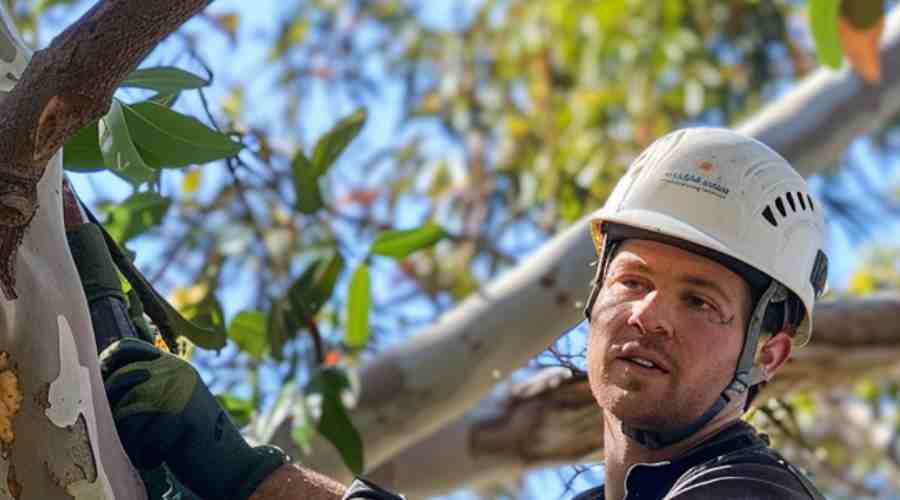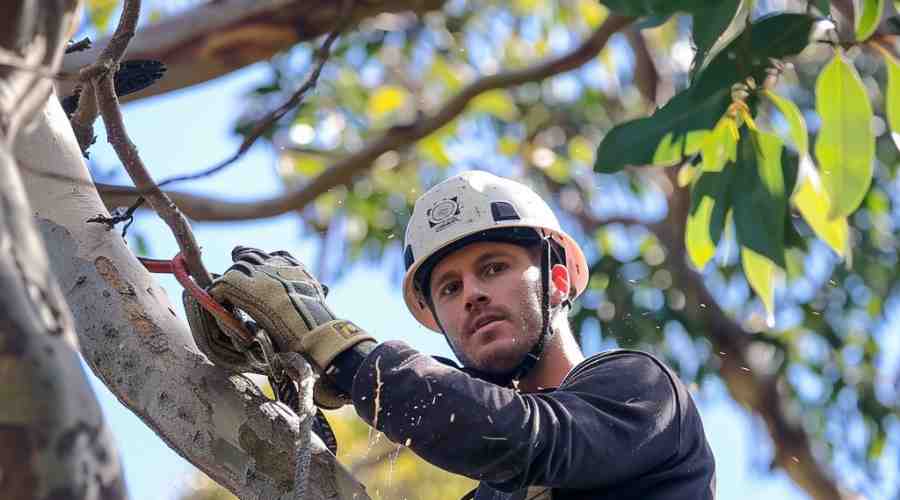Tree Pruning Vs. Tree Lopping
How to Choose the Right Tree Trimming Method
Caring for the trees on your property is an important part of maintaining a beautiful landscape. Two common tree services are pruning and lopping. They both involve cutting branches but have some key differences. Understanding when each is appropriate can help you make the best choice for your trees.
What is Tree Pruning?
Tree pruning refers to selectively cutting branches to encourage healthy growth. It involves identifying branches that are dead, damaged, or posing hazards and removing them. Pruning is also done to shape trees aesthetically, improve air flow, and allow more light penetration.
Specific types of pruning include:
- Crown thinning – Selectively removing small live branches to let more light in. This doesn’t change the overall size and shape.
- Crown raising – Removing lower branches to provide more clearance.
- Crown reduction – Selective cutting to decrease height and/or spread. This is generally only done when absolutely necessary.
Professional arborists follow industry standards to determine how much to prune while preserving tree health. Light, regular prunes are much better than infrequent heavy pruning.
Benefits
- Encourages new growth
- Improves structure and form
- Removes hazards like dead or damaged limbs
- Increases light penetration and air flow
- Can help avoid power line conflicts
- Maintains attractive landscape
What is Tree Lopping?
This refers to pruning that removes whole branches and significantly changes the tree’s appearance and size. This includes removing large living limbs to stubs or lateral branches.
Tree lopping is considered harmful to tree health in many cases. Removing too much live foliage and canopy can deprive the tree of the ability to photosynthesize and sustain itself. It also leaves stubs that are highly vulnerable to insects and decay. That’s why lopping is primarily reserved for completely removing dead or hazardous trees.
When Lopping May be Necessary
There are a few scenarios where more extreme lopping may be acceptable:
- Removing a portion of a hazard tree that cannot be fully removed
- Reducing tree size when branches extend too far into the neighbor’s yard
- Cutting back trees located too close to buildings
- Reshaping overgrown trees like gum trees invading electrical lines
In these cases, experienced tree loppers can determine how best to lop the tree while protecting its health. However it’s always best to exhaust other options, like relocation or regular pruning, before resorting to lopping.
Key Differences Between Tree Lopping and Pruning
| Pruning | Lopping |
|---|---|
| Selectively removes branches posing hazards or impairing growth | Aggressively cuts branches, removing live foliage |
| Encourages healthy new growth | Can deprive tree of ability to photosynthesize |
| Preserves form and appearance | Significantly alters appearance and size |
| Follows standards for limited removal | Type of removal is less specific |
| Improves air flow and sunlight penetration | Used when pruning fails to address issue |
| Performed regularly for tree maintenance | Typically done on an as-needed basis |
The most important distinction is that pruning retains live, healthy branches and foliage while lopping aggressively removes them. Lopping should only be used when absolutely necessary.
Is Tree Pruning or Tree Lopping Best?
For maintaining tree health and appearance on your property, professional pruning is almost always better than lopping. Pruning encourages vitality while responsibly removing hazards and excessive growth. It is part of regular tree care.
Lopping is more a corrective technique for damaged trees or hard-to-manage overgrowth issues. Even then, removal may be a better option than lopping for the health of the tree. An experienced arborist can help you assess your situation and determine whether pruning or removal are possible before considering aggressive lopping.
The most tree-friendly approach is keeping them pruned from an early age. Making light, careful cuts yearly or bi-yearly means you can avoid more intrusive solutions down the road. With responsible pruning, your landscape trees will thrive for generations.
In Conclusion
Pruning and lopping both involve trimming tree branches, but have very different purposes. Pruning maintains tree health while lopping impairs it. For the average property owner, regular light pruning is the best way to care for your mature trees. More aggressive lopping should only be considered when other options fail. Consulting a qualified arborist helps strike the right balance for your trees’ needs.
Pro Tip:
Pruning fruit trees helps prevent disease by improving air flow through open canopies. It removes dense water sprouts that can block light. Pruning also directs more resources towards fruit production rather than excess vegetation. But take care not to over-prune, as removing over 25% of living mass at once stresses trees. Disinfect tools between trees to stop disease spread. Also mind laws around trees on public land near power lines before pruning for weight or views. Consult an arborist on local regulations for responsible fruit tree care.


